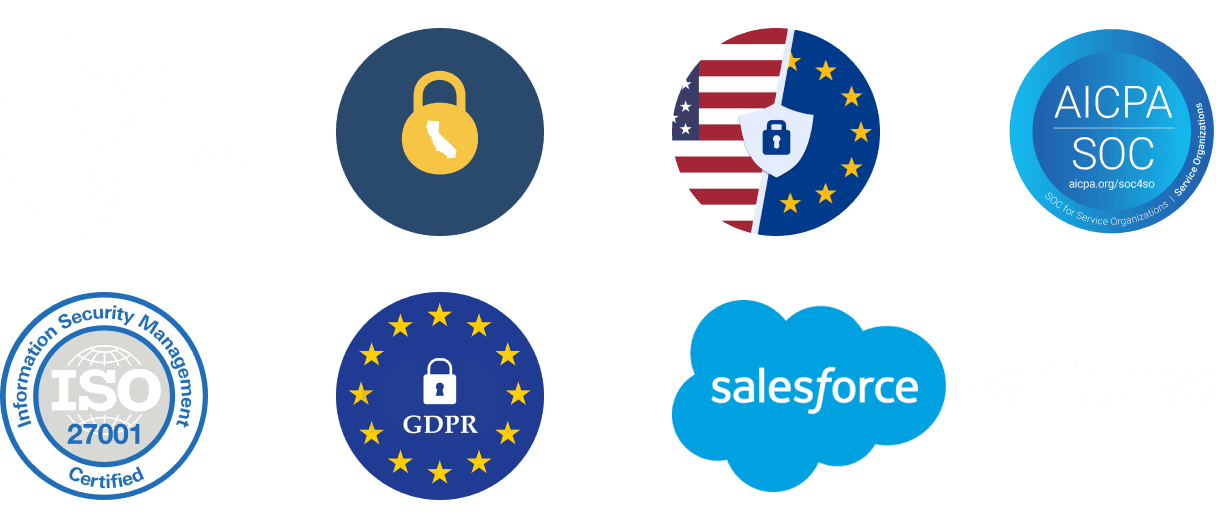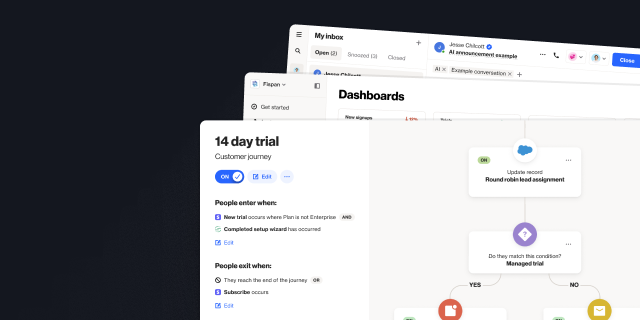10 ways to use Ortto’s tagging feature to improve your workflow
Outline
- Introduction
- What is tagging?
- Why is tagging beneficial?
- 10 examples of how tagging can improve your workflow
More like this:

Organizing your contacts so that you can quickly sort and find the people you want to interact with is smart marketing. This is why tagging your customers in Ortto is a must.
In this blog, we’ll explore what tagging is, why you should tag your customers, and 10 examples of why tagging can improve your workflow.
What is tagging?
Tagging is attributing a tag to a person or organization in order to add a layer of filtering capability within your CDP.
When it comes to tagging, there are really no limits. You can tag groups or cohorts of users, lead lists, support conversations, buyer personas, buyer behaviours, and so on. The more you can tag a person or organization, the more sophisticated your filtering can be.
Why is tagging beneficial?
Tags are useful for filtering and grouping people and organisations within your CDP, meaning you can organize your customers when you need them, and personalize interactions at scale.
With the use of tags, you can deliver personalized content to your audience segments. You can add and remove tags to help move your CDP records from one playbook to another, control which CDP records enter a playbook, group CDP records created or updated from different CSV file imports, and so on.
10 examples of how tagging can improve your workflow
1. Combine tags and engagement scores to target reviews
You can combine tags with engagement scores to find customers that would be likely to leave a positive review or would be good to feature as a case study.
Ortto users can measure engagement scores by setting up variables and using filters to create segments like ‘5 stars’ or ‘high engagement’.

For example, you can tag customers you might want to feature for a case study, and set up an alert when they have hit a certain engagement criteria. The engagement score could be based on how long the customer has used the product and/or service or when they reach a certain milestone (e.g. for ecommerce businesses this could be when a customer has spent a certain amount of money over a certain amount of purchases, or for SaaS businesses it could be that they completed their onboarding).
When a customer meets this criteria, the support team is alerted and can reach out to them. If the customer has had a good experience with your offering and has positive things to say, you can ask them to leave a review on a third-party review site like G2 Crowd, write a testimonial for your website, or participate in a case study.
This is what Ortto did to find customers who wanted to shout from the rooftops about our product. To find out how Resource-as-a-Service business Double Yolk has been creating highly personalized customer journeys and supercharging growth, read our case study.
2. Tag prospect support interactions to fast-track conversions
You can add tags to interactions that occur within your support forms or via your live chat, and based on the query or topic, you can redirect the queries directly to your sales team. For example, if a prospect starts a conversation in your website’s live chat to enquire about a certain product feature, you can tag that query based on the feature and the sales team can be alerted to pick up the conversation to guide them to conversion.
3. Tag email subscribers based on engagement to improve deliverability
Improve your email deliverability (i.e. ensuring your emails land in the inbox rather than the spam folder) by tagging customers, leads or subscribers based on their engagement to maintain email list hygiene. For example, if you know that someone hasn’t opened your engaged with your emails in six months (opened, clicked through, or replied to your emails) you can send them on a re-engagement journey using a win-back email campaign. If that doesn’t work, you can sunset them (i.e. phase them out).
Having a regular re-engagement and sunset process of older, unengaged subscribers is a great way to retain a strong sender reputation with mailbox providers. Read more about email deliverability in our 101 blog.
4. Tag your advocates to retain their advocacy
You can tag your brand advocates (the customers who are actively spreading positive messages about your brand on social media) or thought leaders within your industry and create customer journeys that celebrate key dates. These can include birthdays, product anniversaries, and milestones. This will ensure that your best customers always ‘feel the love’ and remain advocates for the long-term.
5. Tag by use case or persona
Tag by use case to analyze how customers are using your product and/or service and then follow-up with them. Also, if you have different customer personas built out, you can tag your customers based on those personas and analyze how each persona responds to communications, or send them more personalized messaging.
6. Tag customers based on their satisfaction score
The Net Promoter Score (NPS) is a popular customer feedback mechanism. It asks the question: “On a scale of 0 to 10, how likely are you to recommend our company/product/service to a friend or colleague?” The scoring is split across three segments: promoters (scoring 9-10), passives (7-8), and detractors (0-6).
You can tag customers based on whether they are promoters, passives, or detractors, and create relevant customer journeys that engage and follow-up with them accordingly. For instance, you may celebrate your promoters to maintain brand advocacy (like we spoke about in #4), or you may send detractors on a re-engagement journey, delivering them personalized content and asking for feedback on your product and/or service.
7. Tag support conversations to send relevant content
Tag support conversations based on the topic or query and deliver educational content based on that tag. For example, if a customer has a request for a product feature, you can automatically send them information on that product feature when it goes live. Or, if a customer has a question about how to use a certain product feature, you can send them relevant guides on that feature, like benefits, how-to-use it or case studies..
For example, a nutrition and wellness Saas may tag a support query relating to pregnancy-safe supplements, and then could send that customer relevant blog posts, fact sheets and product information relating to prental nutrition and pregnancy. If they release any new products/offerings relating to babies or children in the future, they could let the customer know ahead of time, and perhaps give them a free trial or early access.
8. Tag a lead list by the event source
When you upload a lead list from an in-person or online event like a conference, webinar, meet-up, or product launch event, you can tag that lead list by the said event. For example, if a beauty retailer held an in-person launch party of a new makeup line at their store and sent out event invitations to customers and prospects, they could tag those that RSVP’d and attended and create a customer journey to send them emails about the makeup line with a discount code for their first purchase.
Or, a SaaS business could tag webinar registrants and create a customer journey based on whether or not they attended. For example, if someone registered for the webinar but did not attend, you could send them an email saying, “Sorry we missed you – here is the recording of the webinar.” And later you could follow-up to ask what they thought of it.
9. Apply tags to ‘approved partners’
If your business has a partner program, tag those partners so that you can easily filter in your CDP to ensure you are sending them relevant communications relating to your partnership.
You can also add additional tags for their partnership tier so that you can analyze over time and ensure that partners are receiving the most relevant messaging based on their tier.
10. Tag people who fit your ‘ideal’ customer profile
Tag your ‘ideal’ customers to streamline filtering. For example, say you’re a SaaS payroll platform and your ideal customer is an organization within one of three key industries: construction, mining, and local government, and has over 500 employees. You could assign ideal customer profile (ICP) tags automatically by setting up a journey where tagging occurs when data meets your ICP criteria.
Final word
Tagging in Ortto is super simple and incredibly impactful. Tag your customers in any way that makes sense to you to deliver highly-personalized interactions at scale.


“We were looking for a solution that was really easy to use, didn’t require a tech team, and would have a robust integration with Salesforce so we could trigger sales communications in a smarter way. Nobody else out there has what Ortto has.”

Try Ortto today
Build a better journey.

Product
Pricing
Solutions
Features
About
Resources
Ortto for
Templates
Integrations








